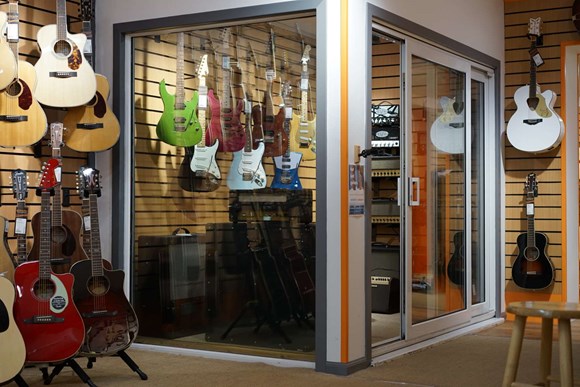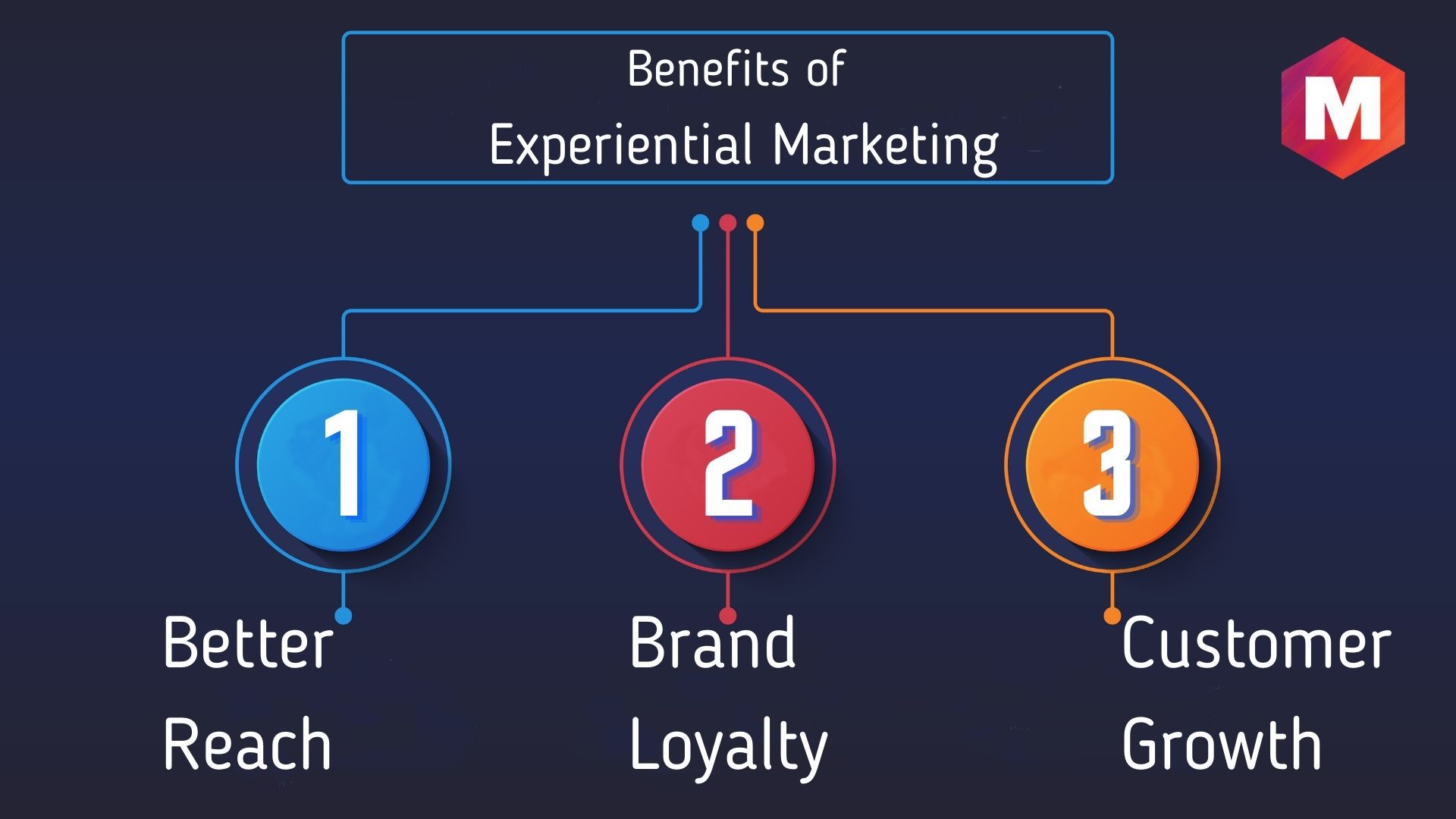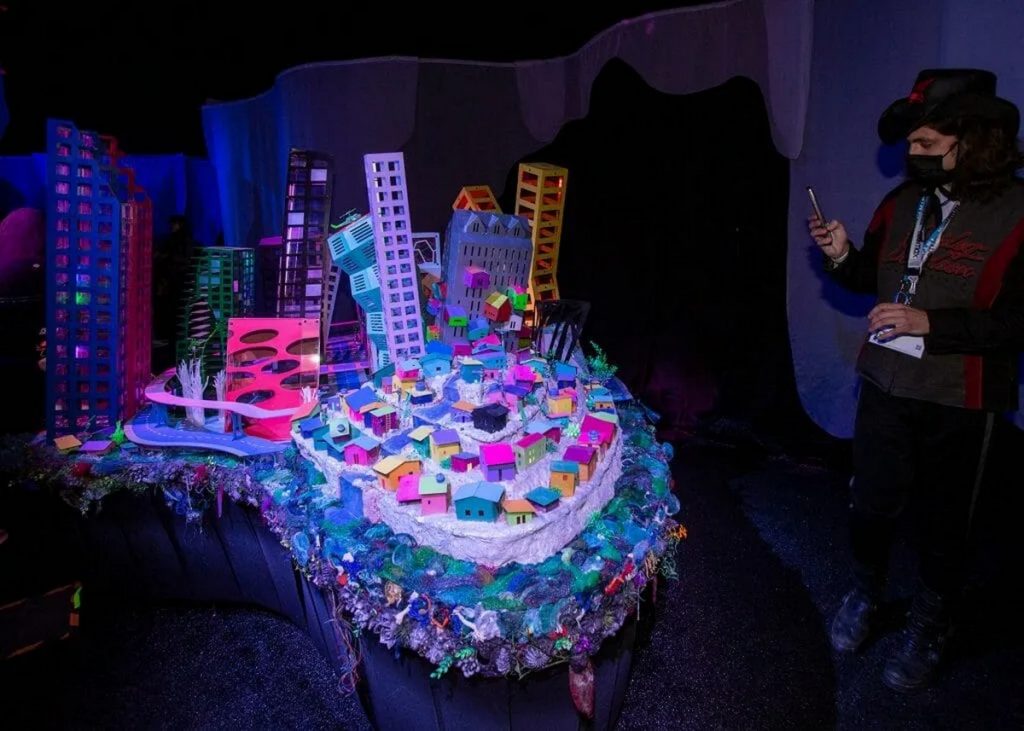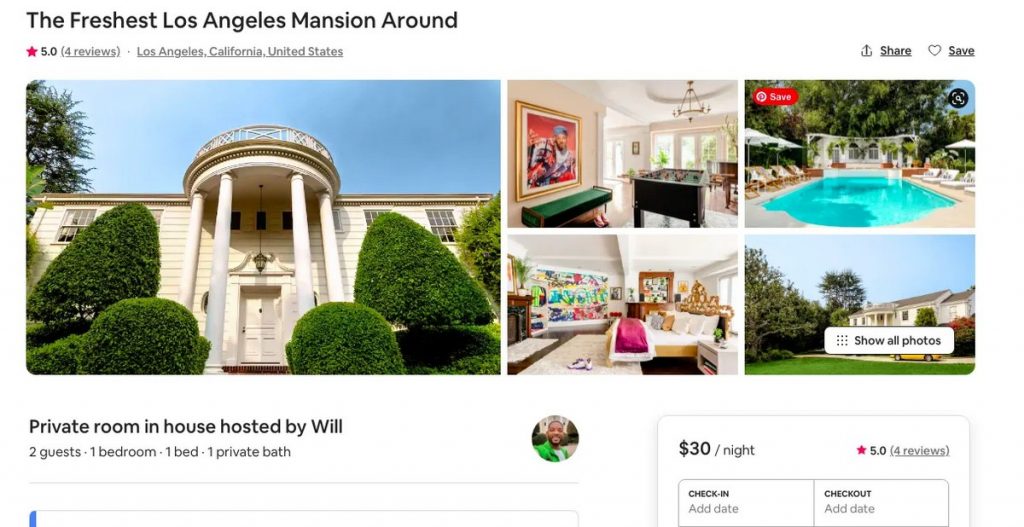Experiential marketing combines methods that encourage viewers to interact with a brand through real-world/branded experiences rather than standard advertising. It creates a memorable impression that resonates with customers and increases sales. It is also known as ‘live marketing, engagement marketing, or event marketing experience.
Overall, a successful experiential marketing strategy is often defined as specific activities carried out by brands to promote their products through unique and dynamic branded experiences.
-
- Experiential marketers should prioritize the importance of experience in capturing shoppers’ attention and converting them into customers.
- Experiential campaigns communicate your true motivation directly to the consumers.
- An experiential campaign should allow consumers to engage in significant, memorable events directly.
Table of Contents
What is Experiential Marketing?
Experiential marketing is a traditional marketing strategy that influences customers through brand experiences. In brief, the brand invites users to test their product before it is released to the worldwide market. Such branded encounters result in a closer bond and a deeper understanding of each other.
For example, GuitarGuitar, one of the leading guitar merchants in the United Kingdom, created soundproof booths to provide consumers with a unique solo experience before purchasing a guitar.
This GuitarGuitar example demonstrates how experiential marketing enables customers to test things before purchasing and fosters a personal connection with the company. Brands can also employ experiential marketing events and campaigns for market research, product launches, pop-up stores, and trade exhibitions.
Nothing beats creating an emotional connection with potential customers that will make them remember you. Companies use this marketing method to increase their CLV (Customer Lifetime Value). CLV calculates the profit created by a single consumer for a brand during his lifetime affiliation with the company.
Experiential marketing tactics come in various forms and sizes, from interactive product demos to immersive brand experiences that increase brand awareness and conversions. Some of these are described below:
10 Experiential Marketing Trends in 2023
1) AR/VR Experiences
AR and VR technologies are becoming a significant part of the experiential marketing industry. Immersive technologies allow brands to create virtual demonstrations and interactive experiences and showcase their products uniquely.
2) Pop-up Shops
Pop-up shops, or “malls on wheels,” are becoming increasingly popular as they allow brands to show off their products and create a unique customer experience in any location. This is beneficial for smaller businesses that don’t have the budget for large-scale experiential campaigns.
3) Interactive Events
Live events with interactive displays and activities can be a great way to engage customers and increase the impact of a brand’s experiential marketing campaign.
4) Digital Experiences
With the growth of digital technology, marketers are increasingly utilizing online tools to create interactive experiences. This includes virtual tours, personalized product demos, and augmented reality simulations.
5) Solo Experiences
Solo experiences are becoming increasingly popular for experiential marketing campaigns. These allow customers to get a personalized experience tailored specifically to their interests and needs.
6) Augmented Reality and Metaverse
Augmented reality and metaverse technologies will create immersive experiences that combine digital and physical worlds—for example, virtual concerts, interactive product demonstrations, and 3-D gaming environments.
7) Human-Centered Experiences
Human-centered experiences focus on providing customers with a personalized experience tailored to their needs or preferences. This includes using AI technology to create customized messages or create memorable experiences.
8) User-Generated Content
User-generated content is an increasingly popular way of engaging customers and creating a personalized brand experience. This includes allowing users to submit their videos, photos, stories, or reviews, which can be used in marketing campaigns.
9) Rise of Hybrid Events
Hybrid events combine digital and physical experiences to create unique experiences. Virtual reality tours, video conferencing, and interactive displays can all be used to create a hybrid event.
10) Technology Integration
Technology integration is essential for successful experiential marketing campaigns. This includes using AI, VR/AR, bots, and augmented reality to create engaging experiences that capture customers’ attention.
Experiential marketing strategies
Experiential marketing tactics involve creating a unique, immersive experience that encourages your target audience to participate and interact with your business. A proactive marketing team with a thorough understanding of these strategies is required. This team will develop a welcoming environment and refine the strategy to entice the intended audience to participate and potentially convert into clients.
Here are some strategies worth exploring:
1. Event Marketing
In experience marketing, event marketing is an excellent direction to go. It involves getting people to know about a specific event, and a good marketing plan is needed for active promotion. The goal is to get as much attention as possible for your event and get the correct information out to everyone. People who want to go should have a clear idea of the event, who it is for, what to expect, and the fun things in store for them.
2. Guerilla Marketing Campaigns
Guerrilla marketing surprises locals. These unconventional events attract individuals and encourage product or customer loyalty and service connections.
When done right, guerilla marketing may be gratifying, primarily if it benefits or challenges participants. Planning and execution are essential for a successful guerrilla marketing campaign.
Consider a product demonstration on a college campus. You want to show a product that appeals to and is affordable to that group. This applies to all events, but guerrilla marketing demands a defined target demographic.
3. Pop-up Shops
Pop-up eateries and clothes stores are growing more common. Pop-up shops are great for brand promotion and customer enjoyment.
A pop-up shop with interesting product demos attracts clients from a new angle. This could be free or charged a small fee for a limited time.
Pop-ups let you experiment with anything from shop design to merchandise selection. Exclusive merchandise at your pop-up shop can entice crowds seeking this rare opportunity.
4. Brand Activation
Brand activation, a critical component of experiential marketing, fosters a personalized connection between a brand and its consumers. It involves appealingly displaying your goods to the market, a strategy enterprises of all sizes can use successfully.
Is experiential marketing effective?
Experiential marketing is extraordinarily effective. Through personalized experiences, brands cultivate unmatched brand attachment. By hosting engaging events, brands greatly increase the likelihood of consumer engagement and purchase intention by demonstrating product benefits directly.
The adaptability of experiential marketing, particularly in response to global events and the revolution in work habits, demonstrates its durability and contemporary relevance. The simplicity of virtual participation improves attendee focus and participation rates by reducing distractions and increasing accessibility, responding to today’s diverse schedules.
Innovative techniques for experiential marketing respond to modern consumer lifestyles, enabling inclusivity for people with irregular schedules or remote job responsibilities. This progression highlights the strategy’s flexibility in maintaining connectedness and immersion despite physical presence limits.
Why is Experiential Marketing Important?
Experiential marketing has become increasingly important because it allows businesses to connect deeper with customers. The key difference between experiential marketing and other types of marketing is that an experience takes place in “real” life.
The main advantages of experiential marketing include the following:
- Raise brand awareness
- Create search demand
- Create a bond between a brand and its audience
- Deliver authentic in-person experiences
- Capitalize on the fear of missing out
- Boost product or service trial
- Drive sales conversions
Key Elements of a Successful Experiential Marketing
It is a common myth that providing free samples of your product will do the job. Gaining customers’ trust is not that simple and requires much more hard work.
The following factors will help you to create a better experiential strategy for accomplishing your goals.
1. Target Audience: Demonstrating your product or service to your entire customer bank is unnecessary. Sometimes, choosing and dividing it into various sections is a better option. Determine the audiences interested in participating in your experiential marketing campaign.
2. Awareness: If you launch an experiential marketing strategy, ensure enough people are waiting to use it. This can only be done through the proper advertisement of your product. The main motive is to make the customers aware of your actions. Promote your campaign on social media platforms like Facebook, Instagram, Twitter, etc. Experiential marketing channels around an effective awareness strategy for powerful marketing and branding.
3. Background Connection: Customers would prefer to test your product only if they are satisfied with the idea behind it. Ensure that an appropriate background for the product is generated that will give them reasons to be a part of it. Lure them with some exciting offers and establish a connection with them. Thus, customers will relate to your brand emotionally, benefiting your product sales.
How to Plan an Experiential Marketing Campaign
1. Put the Customer First: You need to put the consumer first to foster brand ambassadors or brand warriors who can do word-of-mouth experiential marketing for you
2. Know the power of Storytelling: You should understand the power of storytelling, as users who relate to a story make better connections with the brand and give favorable responses via your experiential marketing strategies.
3. Let your brand stories connect: Your brand stories should be truthful, and they might incorporate personalities or characters your audiences can root for. This allows experiential marketing efforts to be more conversion-oriented.
4. Set clear goals: Marketers should set clear goals and outcomes and determine ways to measure them, which will optimize the success rates of experiential marketing campaigns.
5. Identify and Research the market for experiential marketing: For channelizing an experiential marketing campaign, it is inevitable for marketers to Identify and exhaustively research their target market
6. Know the importance of branded experience in experiential marketing examples: You should never forget why offering real-world/branded experiences works by going through some of the famous experiential marketing examples on the web
7. Make your Experiential Marketing Campaigns result-driven: Your experiential Marketing Strategy should revolve around devising a creative, engaging, exciting, and effective activation
8. Use online and social media channels: Marketers should try to find ways to optimize online engagement via social media and other channels
9. Make sure the event marketing strategy for your brand ensures value addition: You should try to offer users something valuable that can channel and create brand awareness and let your audiences and users work as brand ambassadors.
Benefits of Experiential Marketing
Next, it is time to highlight live marketing benefits that can change the game completely. These are the reasons why the hype is created about this experiential marketing style,
1. Better Reach
Engagement marketing is the best way to promote your product before it is launched. Many new customers eagerly await the product to hit your store’s sales platform. Such a participation marketing campaign is more effective than traditional marketing in optimizing reach.
2. Brand Loyalty
Loyal customers are a major part of a brand’s overall success. Experiential marketing will boost trust between both parties. Customers will feel better about your company if they are part of your campaign.
3. Customer Growth
According to several surveys, it has been proved that live marketing enhances the growth of customers. Brands that use more unique methods with a cross-channel marketing plan are preferred when choosing a similar product. Such an interactive experience will increase brand awareness and nurture customer relationships more effectively.
4. Elevated Brand Visibility
Modern marketing has moved beyond simple interaction strategies to prioritize producing experiences with the potential to go viral, significantly increasing brand visibility and consumer reach. This shift tries to create tactics that drastically impact a company’s presence on social media, leveraging user-shared content to increase brand visibility and sales dramatically.
Launching items with unique value propositions, such as an eco-friendly bicycle that filters the air while in use, can generate widespread attention and share across platforms, demonstrating the power and purpose of modern marketing efforts to seed potential viral growth.
What to avoid in your campaign?
Avoid formulaic experiential techniques and prioritize genuine involvement above trends. Refrain from focusing on sales dialogue and turning the endeavor into a hidden pitch session. Maintain brand concepts and create experiences that align with the company brand’s values and ethos. Before embarking on experiential activities to develop genuine connections and cultivate brand allegiance, evaluate resource allocation and set clear objectives.
Examples of Experiential Marketing
1) Immersive Experiences With Spatial
Immersive experiences are the cornerstone of effective experiential marketing. Spatial, an audio brand, designed a captivating Spatial Holodeck experience that drew in over 2,000 attendees at SXSW over four days in 2022.
Spatial provided a range of offerings, including guided demos, interactive installations, hands-on exploration of the technology, collaborative installations with Meow Wolf, and QR-code technology to engage visitors.
2) Airbnb and “Fresh Prince of Bel-Air”
Experiential marketing goes beyond just numbers. It’s about creating intimate experiences that generate extensive media coverage. A great example is when Airbnb, Will Smith, and the owner of the iconic “Fresh Prince of Bel-Air” house joined forces to celebrate the show’s 30th anniversary. The house was decked out with Fresh Prince memorabilia and offered for a limited time at a special rate of $30 per night.
3) KFC and Hip-Hop Artist Jack Harlow
KFC teamed up with Kentucky-based multicultural Agency Nimbus in 2021 to target a younger and more diverse customer base. KFC x Jack Harlow’s collaboration kicked off on December 13, 2021, with a food truck stationed outside Jack Harlow’s first hometown show in Louisville. Then, sizable trucks drove around the city on December 15-16, playing Harlow’s tracks.
The partnership entered a new phase starting in March 2022. Guests could now order Jack’s favorite items from KFC through the Quick Pick-Up option on the app or website at specific locations. Upon arrival at the restaurant, guests could conveniently park in designated VIP parking spots and proceed to the newly introduced Quick Pick-Up shelf at KFC.
4) Warner Bros Pictures: Barbie Movie Selfie Generator
The much-awaited movie Barbie has been cleverly promoted to appeal to fans of diverse ages and backgrounds. You can experience being a Barbie doll on the cover through captivating trailers and interactive generative AI.
When users went to the BarbieSelfie.ai website, they were welcomed with a message that said, “Step into Barbie Land, where you have the chance to become Barbie or Ken. Click below to become an icon! #BarbieTheMovie instantly”.
5) Red Bull: Stratos
For nearly as long as the brand has been around, Red Bull has been leading the way in covering extreme sports. However, the company took its content marketing to unprecedented heights, setting a world record.
Red Bull’s out-of-this-world marketing campaign, affectionately known as Stratos, showcased the daring skydiver Felix Baumgartner. With Red Bull, Baumgartner took on the challenge of setting the highest skydive world record. And he did just that, freefalling from a mind-boggling altitude of 128,000 feet, approximately 24 miles above the Earth’s surface. It’s truly awe-inspiring!
Should you try experiential marketing?
Consider your objectives, timeline, and resources to determine when to include an experiential marketing campaign in your branding event.
Experiential marketing campaigns can be a powerful tool to make your brand or sponsors more human and create memorable experiences, that leave consumers with lasting, positive impressions. Nevertheless, combining these real-life experiences with social media and content distribution across channels is essential for maximum reach.
If you want to create an experiential event that will leave a lasting impression on attendees, more than awarding prizes through a wheel or raffle is required. You need to craft creative and immersive touch points that can increase the value of your event for both yourself and any sponsors involved. This may require significant budgeting resources or work with well-known brands willing to help facilitate.
Key Points to Remember!
- Plan a unique and engaging experience that aligns with your brand identity.
- Strive to create a human connection with consumers through the campaign.
- Leverage social media and other distribution channels for maximum reach.
- Allocate appropriate resources or collaborate with well-known brands.
- Remember, the goal is to leave a lasting, positive impression.
- Leverage data and analytics to measure the impact of your experiential campaign.
Conclusion
Experiential marketing can be an excellent way to captivate consumers, increase brand awareness, and create powerful memories that will stay with them for years. Be imaginative with your campaigns, think outside the box, and don’t be afraid to try something new.
Remember, it’s all about creating a unique experience tailored to your brand and will make a lasting, positive impact.
Liked this post? Check out the complete series on Marketing



